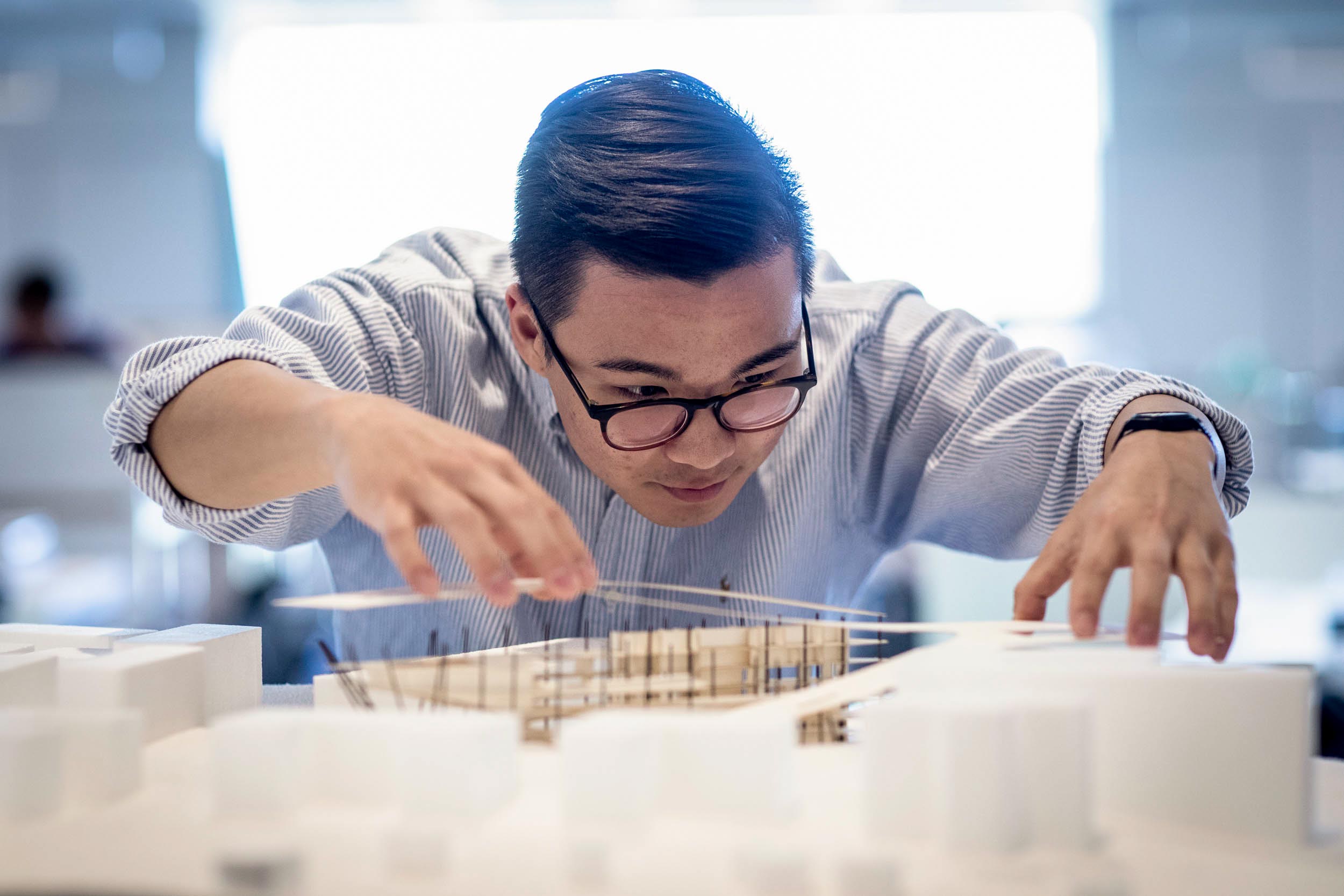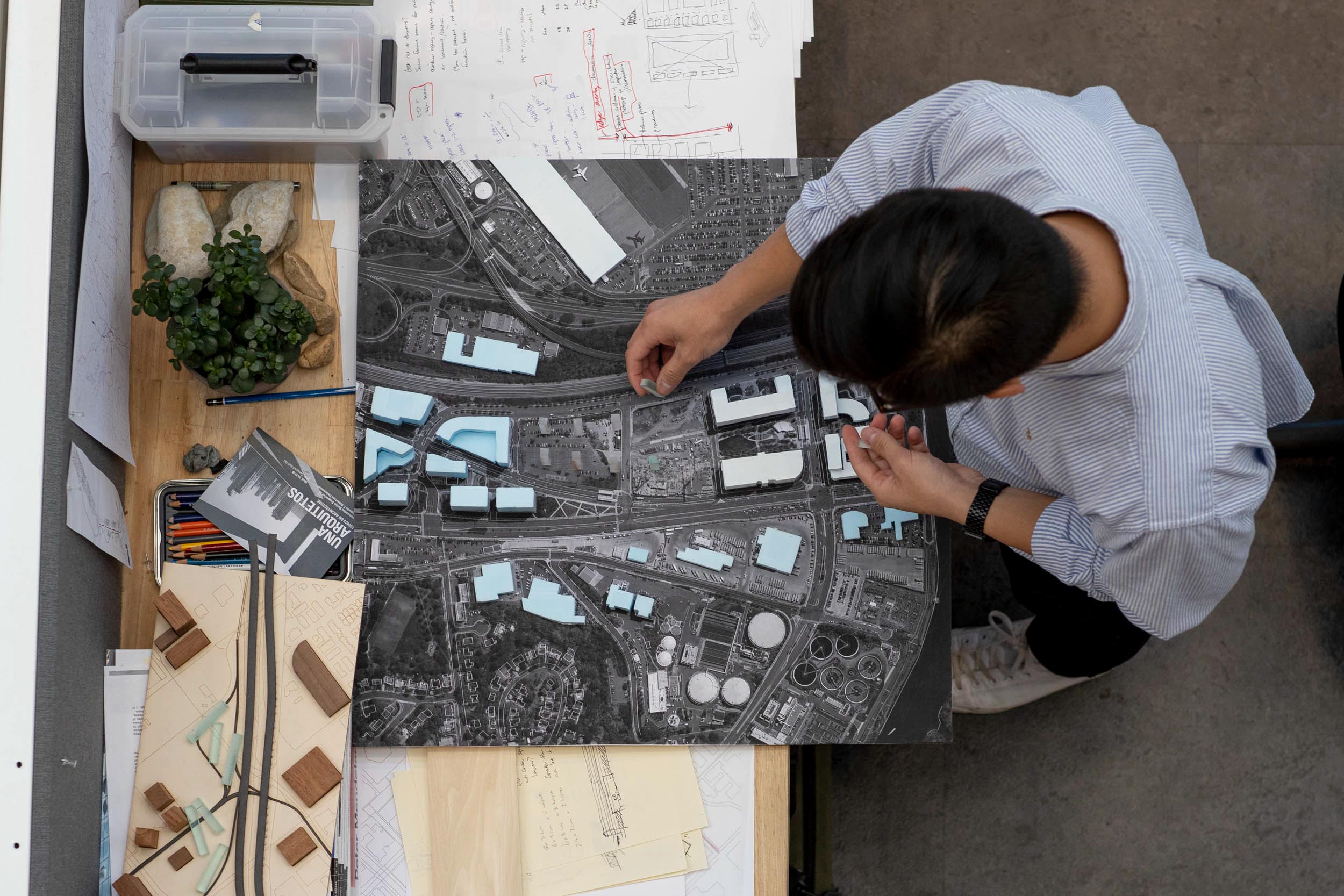“It was a proud moment for me, because getting into the Commerce School is not easy,” he said. “But I realized that I had already made up my mind, that I knew in my heart I wanted to study architecture.”
Shim declined his Commerce School acceptance right then and instead began the process of transferring into the School of Architecture. It wasn’t easy to join classmates who already had two years of architecture education. However, Shim, who will graduate this month, has no regrets.
He will leave UVA with a job (in Washington, D.C., with global architecture firm Cooper Carry), a completed thesis project on mixed-income housing for Amazon’s HQ2 site in Arlington, and the Distinguished Artist Award in Architecture, an honor bestowed by the UVA Arts Council last year.
Thanks to his four years in the Cavalier Marching Band, Shim will also leave with memories of a national championship. He is the leader of the band’s trombone section, played at every home football and at many basketball games, including the NCAA championship game in Minneapolis.
Perhaps most importantly, he will also leave UVA with a cast of mentors, drawn from architecture professors whom he said have played an outsized role in his growth as a student and a person.
“One thing that sticks out to me, looking back at the past 2 ½ years is the degree to which my architecture professors have cared for my own personal growth,” he said. “It really went beyond my expectations, and I don’t feel any reservations about approaching any professor I have met. They are all very open to discussion.”
He has worked closely with architecture and urban and environmental planning professor Mona El Khafif on a thesis project exploring affordable housing solutions for Crystal City, which could face dramatic change as Amazon – and the thousands of workers it might bring – comes to town.
“The region is already facing a housing shortage, with a significant lack of affordable housing options,” said Shim, who encountered the problem firsthand when looking for an apartment near his new job.
His thesis proposes alternatives to conventional single-family homes, which are costly to develop and often not the best solution for young, unmarried workers. Instead, he created a model for modular housing that could be built in vertical buildings, with private gardens and balconies complemented by shared spaces and gardens at the top and bottom of each building.






